
Roses: the best varieties and how to grow them
Contents
Roses in a nutshell
- Roses come in a variety of forms: they can be bushy, climbing, or ground-covering…
- They offer single or double flowers, in a very wide range of colours!
- They are appreciated for their often pleasantly scented flowering.
- They are perfect for creating cut flower arrangements!
- The rose is an essential element for creating a romantic atmosphere in the garden! It also finds its place in English gardens.
A word from our Expert
True symbol of love and romance, with an extremely delicate flowering, the rose is the queen of flowers. It is one of the most cultivated plants in gardens. It is appreciated for its single or double flowers, often highly fragrant, and its superb divided foliage, deciduous or semi-evergreen. Flowers range from white to red, but can also be yellow, orange, or even mauve… There is even a nearly black rose, with the variety ‘Black Baccara’! Whatever their colour, roses always possess exceptional elegance, making them a key element in romantic gardens and English-style gardens.
With several thousand varieties, roses offer beautiful diversity! The most classic are bush and shrub roses, which easily find their place in borders or beds, but other varieties grow as groundcover, while climbing roses scale pergolas or the facades of houses. As for standard roses, they add a very elegant touch to the garden and are perfect as standalone specimens, for example in a lawn.
Planting roses is possible all year round, but is preferably done in autumn in cool, well-draining soil rich in organic matter. The smaller varieties adapt well to pot cultivation! Roses require a bit of maintenance to provide generous flowering. It is advisable to provide them with fertiliser, carry out some watering during dry spells, and to prune them. They are susceptible to rust, powdery mildew, and black spot disease, and may require some treatments.
Botany
“`html
Botanical data
- Latin name Rosa sp.
- Family Rosaceae
- Common name Rose
- Flowering from June, and until autumn for repeat-flowering varieties
- Height highly variable, from 20-30 centimetres to over 10 metres
- Exposure full sun or light shade
- Soil type rich and well-drained
- Hardiness -15 to -20 °C
Roses are deciduous or semi-evergreen bushes or climbing plants with thorny stems. There are approximately 150 species, native to Europe, Asia, and North America. In France, there are just under 20 species in the wild. Some originate from Asia but have naturalised, escaping from the gardens where they are cultivated (Rosa multiflora, Rosa rugosa, Rosa banksiae…). Rosa canina, the dog rose, is undoubtedly the most common species found in nature in France. The French rose, Rosa gallica, is protected throughout the metropolitan territory.
Roses have been cultivated for over 5,000 years and have been extensively hybridised, to the point that there are now thousands of varieties, differing greatly in habit and flowering. Cross-breeding of botanical roses has resulted in a multitude of varieties… To help identify them, they are classified into different groups based on their characteristics, general shape (climbing roses, bush roses…) or style (old roses, English roses…).
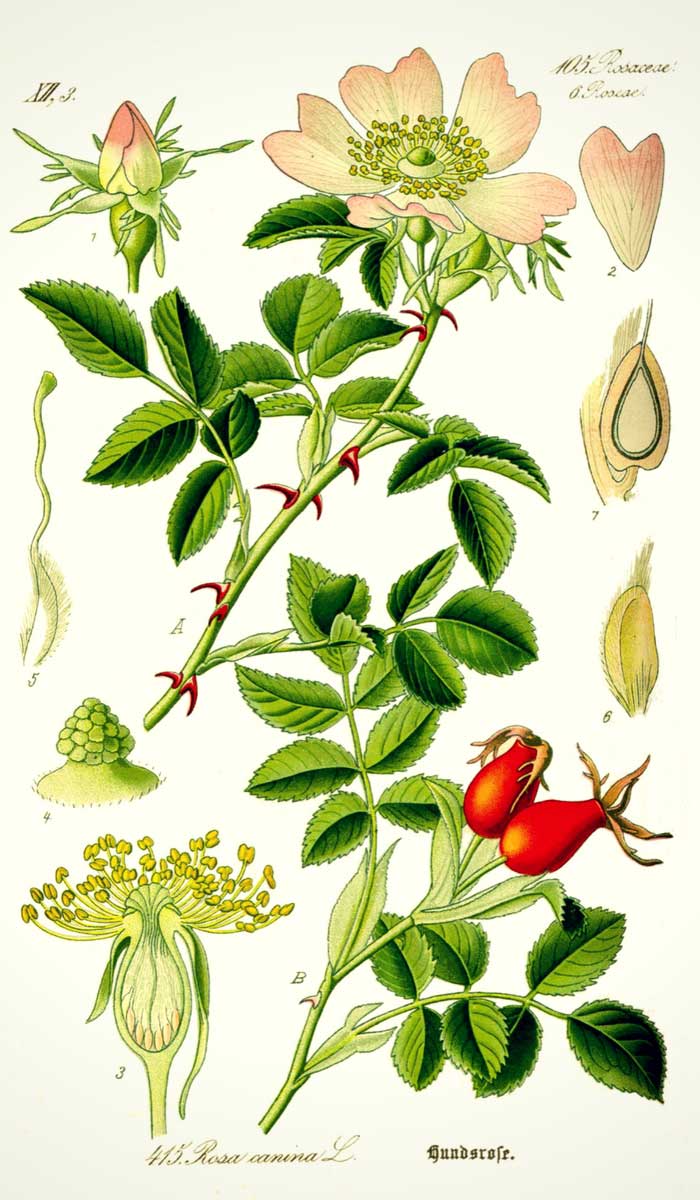
Rosa canina: botanical illustration
The rose gave its name to the family of Rosaceae. This is an important family, comprising around 3,000 species. It includes the most common fruit trees, such as plums, apples, and cherries, as well as wild plants frequently found in nature in France: hawthorn, bramble, rowan… And many ornamental plants: pyracantha, cotoneaster, cherry laurel, spiraea, photinia, potentilla…
The height of roses is extremely variable, ranging from miniature roses that measure less than 50 centimetres tall, to climbing roses that can ascend several metres by climbing trees or walls. Thus, Rosa gigantea, the tallest rose species, can reach over 20 metres in height by climbing on other trees.
Roses can take on extremely varied forms! They are often bushy or shrub-like, but many varieties are also climbing. They can be trained against a wall, on a pergola, an arbor, or in a tree… The most vigorous climbing roses are called liana roses (e.g. Rosa banksiae). Others grow as groundcover, with a low and spreading habit. There are also miniature roses, well-suited for pot cultivation, intended for placement on a balcony or terrace, for example. Finally, some roses are trained on a standard. They consist of a tall, straight stem from which a ball of leaves and flowers emerges. This form does not exist in nature: it is achieved by grafting a bush rose. The appearance is therefore less natural than that of other types of roses, but very elegant. When a climbing variety is grafted, these standard roses take on a weeping, trailing habit. There are also landscape roses, which are relatively low and grow in a very spreading manner. Finally, some roses, like Rosa rugosa, are suckering! New shoots emerge directly from the roots.
The stems of roses can therefore be upright, climbing, or creeping. They usually bear thorns. These can sometimes be very decorative, as seen in Rosa sericea var. pteracantha, with its large, red thorns. Again, there are no strict rules; they can vary in size, being very fine or much broader, dense or more scattered. There are also inermous varieties, without thorns.
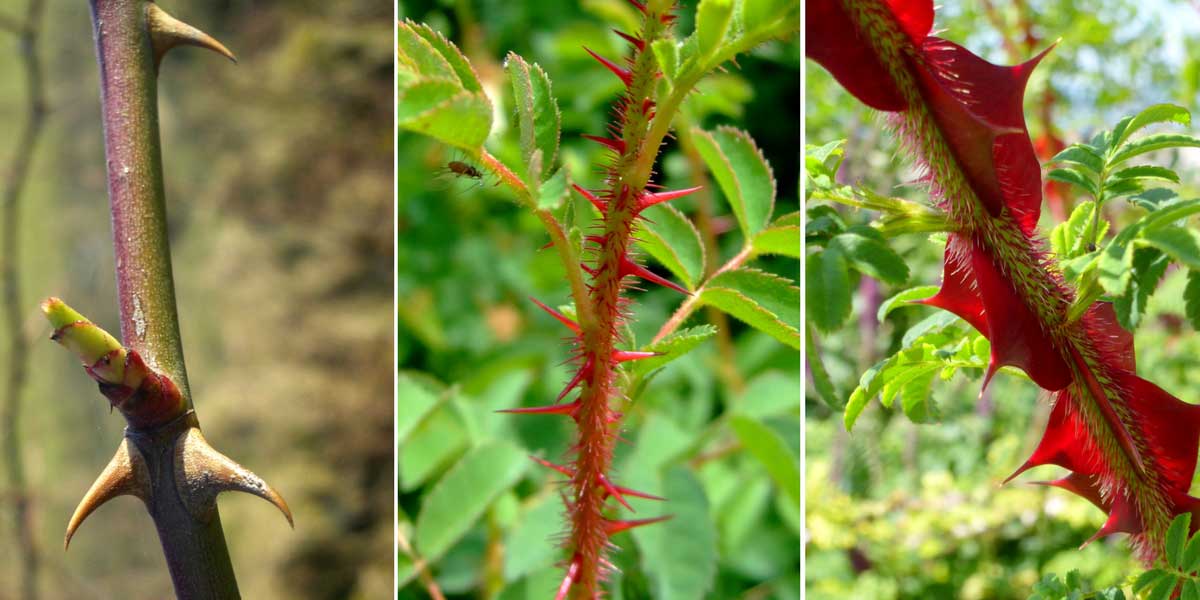
The thorns of roses can take various forms! From left to right, Rosa canina, Rosa spinosissima, and Rosa omeiensis ‘Pteracantha’ (photo Wendy Cutler)
Some roses only bloom once, usually at the end of spring or early summer. This is often the case with old roses and climbing roses. It is the cross-breeding with Asian roses Rosa chinensis that has led to the development of repeat-flowering varieties. Thus, modern roses are often repeat-flowering, blooming from May-June until the frost.
Originally (in botanical roses), the flowers have five petals, surrounding numerous stamens. It is hybridisation and successive crossings that have resulted in double flowers, with a very high number of petals, sometimes up to sixty, as seen in the rose ‘La France’. These are actually modified stamens that have taken on the form of petals, which often renders these flowers sterile. They can therefore be single, semi-double, double, or very double. They can be cup-shaped, pompom-like, globular, or flat. Modern varieties (notably hybrid teas) are sometimes turbinate, giving them an extremely refined appearance.
The colours of rose flowers generally range from white to red, with subtle variations of pink. However, they can also be yellow or orange. The rose ‘Black Baccara’ is such a dark red that it appears black. There are no truly blue-flowered varieties, but some come close, such as the mauve-blue flowering of the rose ‘Mamy Blue’, or the purple flowers of ‘Rhapsody In Blue’. Pure white flowering roses, like the variety ‘Memoire’, are particularly elegant. The colours of roses have a very symbolic value, and red varieties are appreciated for the intensity of their flowering, representing passionate love. The petals can also be bicoloured, as seen in ‘New Imagine’, ‘Betty Boop’ or ‘Abracadabra’! The flowers sometimes offer stunning gradients, as seen in ‘Little Sunset’, yellow in the centre and then pink-orange on the outside. As for the rose ‘Blue Eyes’, it presents a remarkable contrast with its white petals coloured purple at the centre of the flower.
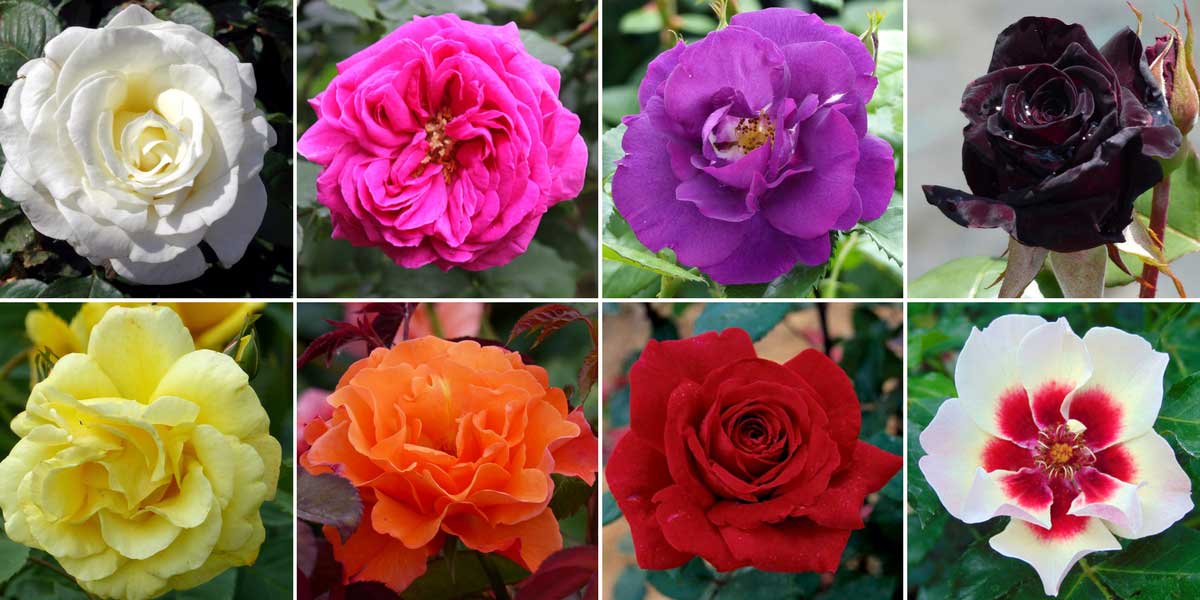
Roses offer a wide range of shades! From left to right and top to bottom, the varieties ‘Memoire’ / ‘Madame Isaac Pereire’ (photo Rictor Norton & David Allen) / ‘Rhapsody In Blue’ / ‘Black Baccara’ / ‘Golden Gate’ / ‘Orange Climber’ / ‘Botero’ / ‘Coral Babylon Eyes’
Old roses are particularly valued for their fragrance! Modern varieties are often a bit less fragrant, except for English roses. The scent can be musky, fruity, spicy, powerful, or more subtle… The aroma evolves throughout the day, and it also varies depending on exposure. Discover also our most fragrant varieties!
Rose flowers can be solitary, as is the case with hybrid tea roses. This allows for a better appreciation of the beauty of these often large flowers, which are thus highlighted in isolation. But roses can also sometimes bear flowers grouped in bouquets, as seen in multiflora, polyantha, and floribunda roses.
The leaves of roses are divided, usually composed of five to seven leaflets, with a dentate edge. Some roses have up to nine leaflets, or even more. They are arranged oppositely, with one leaflet in a terminal position. The leaves can be very small: those of miniature roses measure up to 3 centimetres in length, while larger varieties (like bush or climbing roses) can have leaves that reach up to twenty centimetres long. The base of the petiole is usually equipped with stipules (a kind of small leaves located at the point of attachment of the leaf to the stem).
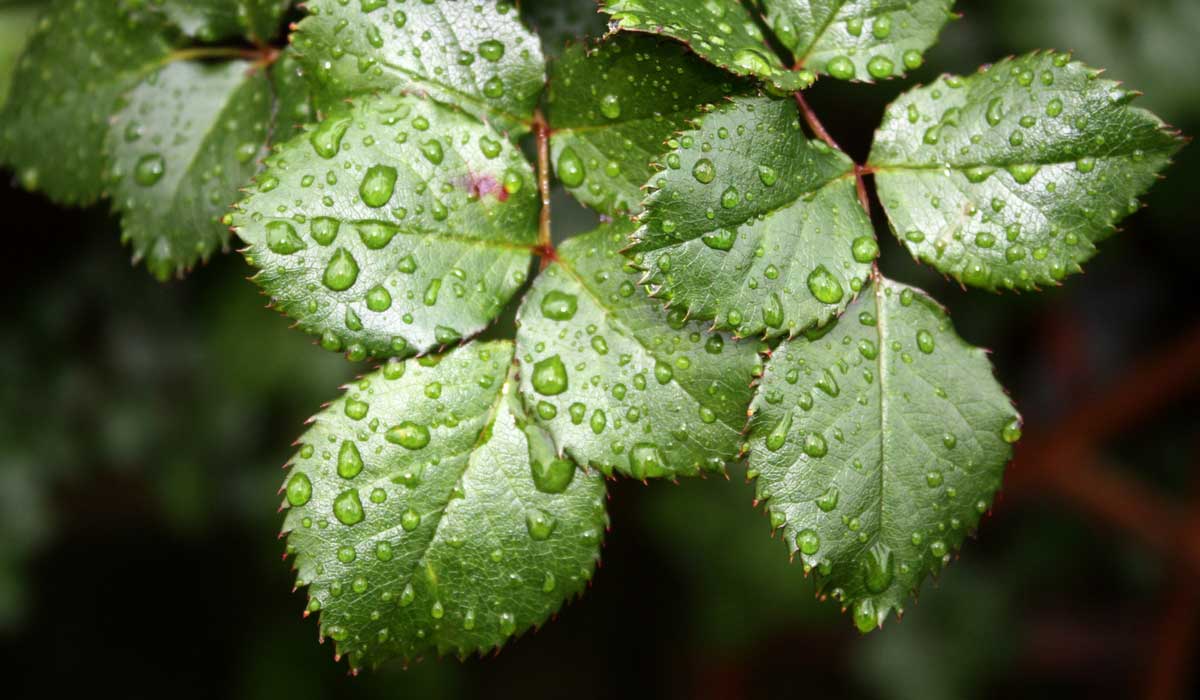
The foliage of roses is composed of dentate leaflets
The leaves are often green but can take on a glaucous, blue-grey hue, as seen in Rosa glauca. As for the rose Rosa ferruginea, it also has very glaucous, blue-grey leaves tinged with purple. The young leaves of roses sometimes take on lovely red hues!
Roses are most often deciduous, but can also be evergreen, as in the botanical rose Rosa sempervirens. This has given rise to several semi-evergreen hybrids (‘Adélaïde d’Orléans’, ‘Félicité et Perpétue’, etc.).
In autumn, roses bear rose hips. They are spherical or oval in shape, more or less elongated, and red, sometimes orange. Inside, they contain achenes, each holding a seed. These achenes are equipped with highly irritating hairs, which is why they are colloquially known as “itchy bottoms.” Rose hips are edible, particularly rich in vitamin C, but the irritating hairs must obviously be removed. They can be made into rose hip jam. Prefer the fruits of the species Rosa rugosa or those of the dog rose (Rosa canina): they are the largest and most interesting to consume.
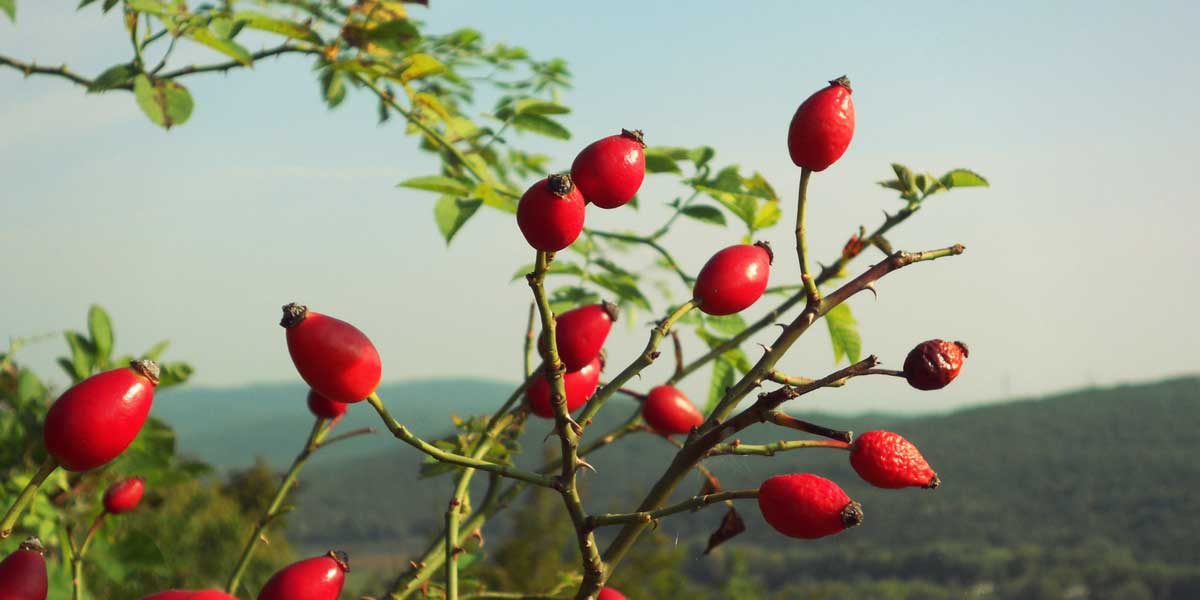 Rose hips, the pseudocarps of the rose (Rosa canina)[/caption>
Rose hips, the pseudocarps of the rose (Rosa canina)[/caption>
This is the dog rose! It is quite common in France. The flowers are pale pink, with five petals arranged around numerous yellow stamens. They then produce rose hips. This species is sometimes used as a rootstock, particularly in calcareous soil.
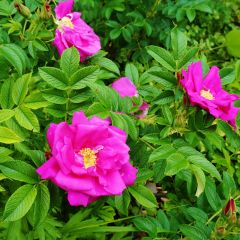
Rosa rugosa - Beach Rose
- Flowering time July to November
- Height at maturity 1,25 m
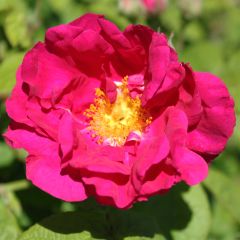
Rosa gallica Officinalis - Old Gallic Rose
- Flowering time July, August
- Height at maturity 90 cm
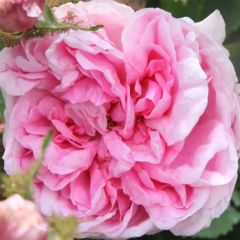
Rosa centifolia Muscosa - White Moss Rose
- Flowering time July, August
- Height at maturity 1,30 m

Rosa x chinensis 'Mutabilis' - China Rose
- Flowering time June to November
- Height at maturity 1,70 m
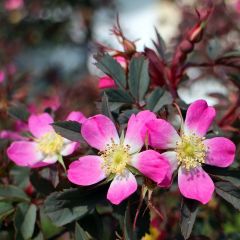
Rosa glauca Rubrifolia - Gallic Rose
- Flowering time July, August
- Height at maturity 2,50 m
“`
The History of roses
Roses have been cultivated for over 5,000 years in Asia, particularly in China. They were initially grown for their medicinal properties. These flowers were also appreciated by the Egyptians and Romans.
The Damask Rose, Rosa damascena, was brought to Europe in the 13th century with the Crusades. At that time, in France, the Gallic roses began to be cultivated, notably Rosa gallica ‘Officinalis’, also known as the Provins Rose or Apothecary’s Rose, for its medicinal rather than ornamental properties. Rosa gallica, through hybridization with other botanical species, gave rise to the cabbage roses, Rosa centifolia. They subsequently led to the development of moss roses. Old roses offered highly fragrant but non-repeat flowering blooms.
In the 18th century, roses from China, Rosa chinensis, were imported, which had the unique characteristic of being repeat flowering. This allowed for the creation of repeat flowering hybrids, known as tea roses.
In the 19th century, Empress Joséphine de Beauharnais became passionate about roses and built an enormous collection at the Château de la Malmaison.
From the obtaining of the variety ‘La France’ in 1867 by Jean-Baptiste Guillot, the first hybrid tea rose, the term modern roses began to be used. Roses considered old are therefore all those obtained before this date. This was followed by the development of bush roses with clustered flowers: floribunda and polyantha roses. Countless varieties were produced by hybridizers such as Meilland or Georges Delbard. Then, English roses developed, with varieties created by David Austin. Finally, landscape roses were created, generous and wide roses that require almost no maintenance.
Discover other Roses
View all →Available in 0 sizes
Available in 2 sizes
Available in 2 sizes
Available in 3 sizes
Available in 2 sizes
Available in 2 sizes
Available in 2 sizes
Available in 3 sizes
Available in 2 sizes
The varieties
To ensure you have a resilient rose, choose those with the German ADR label. This evaluates both the flowering, the overall aesthetics of the plant, as well as resistance to diseases and adaptation to various climatic conditions. It guarantees a rose with good hardiness and the ability to thrive without the use of chemical treatments.
These are hybrid tea roses: they are repeat-flowering varieties that form dense, ramified bushes, shorter than bush roses, and are suitable for mass planting or borders. The flowers are stunning: large, double, often turbinate. They are perfect for creating bouquets!
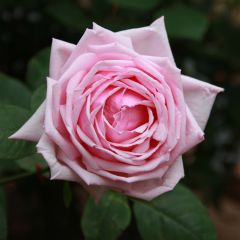
Rosa La France
- Flowering time July to December
- Height at maturity 1 m
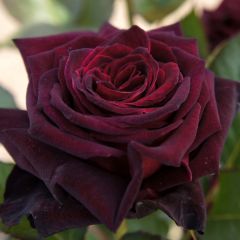
Rosa 'Black Baccara' - Hybrid Tea Rose
- Flowering time July to October
- Height at maturity 90 cm
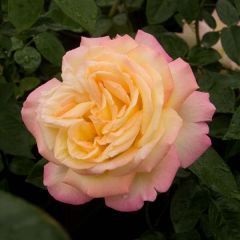
Rosa 'Madame A. Meilland' - Peace Rose - Hybrid Tea Rose
- Flowering time July to November
- Height at maturity 90 cm
Discover our wide range of large flower bush roses.
These are Polyantha and floribunda roses. They are repeat-flowering varieties that offer a bouquet-like flowering, grouping a minimum of three and up to twenty flowers. Plant them in masses, borders, or hedges.
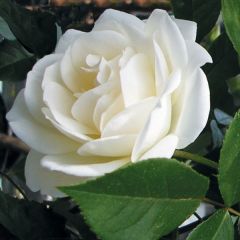
Rosa 'Fée des neiges' (Iceberg) - Shrub Rose
- Flowering time July to November
- Height at maturity 1,30 m
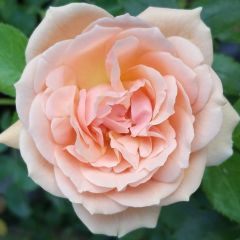
Rosa Garden of Roses
- Flowering time July to October
- Height at maturity 50 cm
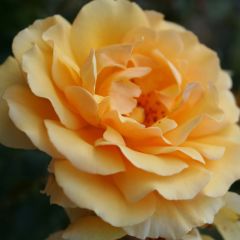
Rosa Amber Queen - Floribunda Rose
- Flowering time July to November
- Height at maturity 60 cm
Discover our cluster flower bush roses.
This group includes old varieties (musk roses and rugosa roses), as well as more modern roses, known as “landscape” roses. Shrub roses differ from bush roses by their greater height. They are perfect for mass planting but can also be planted as standalone specimens.
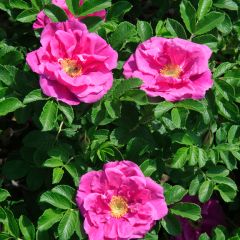
Rosa x rugosa 'Roseraie de l'Haÿ' - Rugosa Rose
- Flowering time June to November
- Height at maturity 2 m
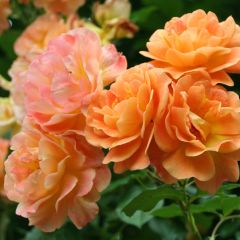
Rosa Westerland (Korwest) - Hybrid Shrub Rose
- Flowering time July to November
- Height at maturity 1,80 m
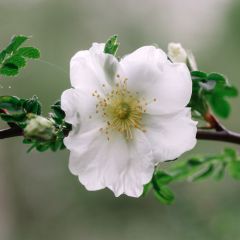
Rosa Nevada
- Flowering time July to September
- Height at maturity 1,50 m
Find all our shrub roses!
Groundcover roses are low-growing varieties that spread easily. They are repeat-flowering and generally bear flowers grouped in bouquets. Among them are the decorosiers! You can plant them on a slope or at the edge.
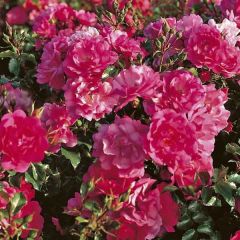
Rosa Decorosier Emera - Shrub rose
- Flowering time June to November
- Height at maturity 70 cm
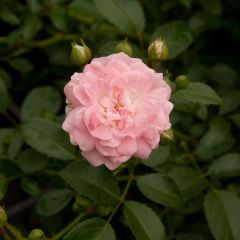
Rosa x polyantha The Fairy - Groundcover Rose
- Flowering time August to November
- Height at maturity 80 cm
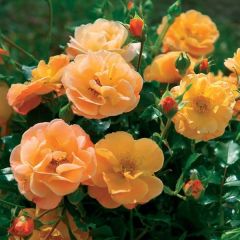
Rosa Decorosiers Calizia - Shrub Rose
- Flowering time June to November
- Height at maturity 70 cm
Find all our groundcover roses!
Dwarf roses measure less than 50 centimetres in height and are perfect for pot cultivation, placed for example on a terrace or balcony! They have small leaves and offer generous, repeat-flowering.
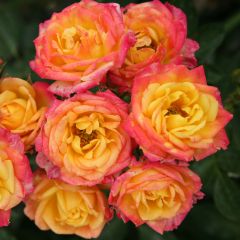
Rosa x polyantha - Lilliputs - 'Little Sunset' - Miniature Rose
- Flowering time June to October
- Height at maturity 40 cm

Rosa x polyantha 'Charmant' - Miniature Rose
- Flowering time June to October
- Height at maturity 40 cm

Rosa Sweet Dream
- Flowering time July to November
- Height at maturity 40 cm
Discover our range of dwarf and miniature roses at the nursery!
These varieties have long stems that allow them to cling to their support. They are perfect for dressing the wall of a house or climbing on a pergola or arbour.
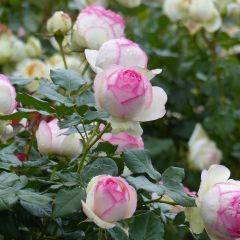
Rosa Pierre de Ronsard - Climbing Rose
- Flowering time July to November
- Height at maturity 2 m
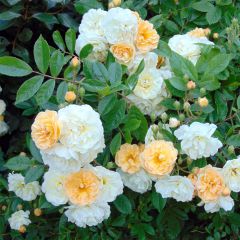
Rosa Ghislaine de Féligonde - Climbing Rose
- Flowering time July to November
- Height at maturity 3 m
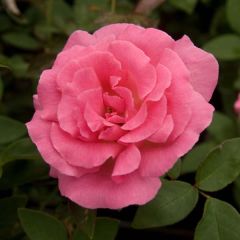
Rosa x Bourbon 'Zéphirine Drouhin' - Climbing Rose
- Flowering time July to November
- Height at maturity 3 m
Discover our stunning climbing roses!
These are particularly vigorous climbing roses. They have a rapid growth and take little time to cover a facade or climb a tree, clinging to supports with their thorns. Their flowering is abundant, but most of them are not repeat-flowering.
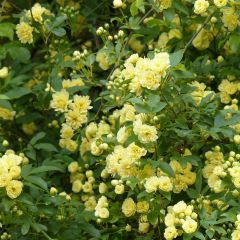
Rosa banksiae 'Lutea' - Rambling Rose
- Flowering time May to July
- Height at maturity 12 m
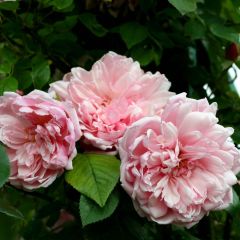
Rosa x wichuraiana 'Albertine' - Rambling Rose
- Flowering time June to August
- Height at maturity 6 m
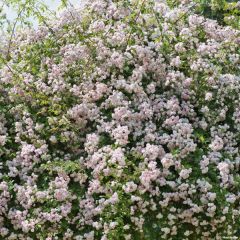
Rosa x moschata 'Paul's Himalayan Musk' - Rambling Rose
- Flowering time July, August
- Height at maturity 8 m
Find our rambling roses!
Old roses can have single or double flowers. The flowerings are fragrant and generally have a very delicate aspect. They are often not repeat-flowering.
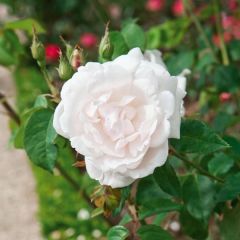
Rosa x Noisette 'Madame Alfred Carrière'
- Flowering time July to November
- Height at maturity 4 m
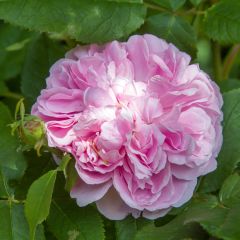
Rosa Jacques Cartier - Portland Rose
- Flowering time July to November
- Height at maturity 1,20 m

Rosa Ghislaine de Féligonde - Climbing Rose
- Flowering time July to November
- Height at maturity 3 m

Rosa Jacqueline du Pré - Hybrid Tea
- Flowering time July to November
- Height at maturity 1,30 m
Our old roses are a must-see!
English roses are bush or climbing varieties that offer double, often fragrant flowerings. They are repeat-flowering and are appreciated for their delicate and elegant appearance. They are generally bred by David Austin.
→ Learn more with our sheet How to choose an English rose

Rosa Graham Thomas - English Shrub Rose
- Flowering time July to November
- Height at maturity 1,50 m

Rosa 'William Shakespeare 2000' - English Rose
- Flowering time July to November
- Height at maturity 1,25 m

Rosa Gertrude Jekyll - English Rose
- Flowering time June to November
- Height at maturity 1,20 m
Discover our range of English roses!
Read also
Roses: aphids and other pestsPlanting
Where to plant?
Install your roses in full sun or light shade. Sunlight ensures beautiful flowering, although some varieties can tolerate shaded conditions.
Roses are hungry plants that thrive in soils rich in organic matter. It is advisable to add well-decomposed manure or compost. Your rose will flourish in deep, well-draining soil. Moisture must be able to escape to prevent the onset of fungal diseases. If your soil is heavy and clayey, ensure proper drainage. Avoid overly calcareous soils that may lead to chlorosis (yellowing of the foliage), unless the rootstock is Rosa canina, which tolerates lime well.
Choose a sheltered yet open location. Avoid overly confined spots (for example, wedged against a wall or other plants). Air circulation is essential to prevent disease development. Similarly, do not plant your rose in a spot where one has previously been, to limit the risk of transmitting fungal diseases.
When to plant?
The best time to plant roses is in autumn when they are bare-rooted. However, if your soil is heavy and clayey, it is better to wait until the end of winter to plant them. If you purchase them bare-rooted, you can reasonably plant them between late autumn and early spring (from November to March), while container-grown roses can be planted year-round. Avoid particularly frosty or hot periods.
→ Read also: When to plant roses?
How to plant?
- Start by pruning the branches to about thirty centimetres. Also shorten the roots.
- Place the root ball in a basin filled with water to rehydrate it and facilitate recovery.
- Dig a hole large enough, ideally about 50 centimetres deep. Add well-decomposed compost or manure, as roses appreciate soils rich in organic matter. If your soil is heavy and clayey, improve drainage by adding gravel or pumice.
- Gently untangle the roots.
- Place the root ball in the planting hole. You can position the graft union slightly above soil level. Traditionally, it is advised not to bury the graft union, especially if your soil is not well-suited for growing roses (e.g., calcareous soil). However, you may choose to bury the graft union. If you live in a region with a harsh climate, this will help protect it from the cold.
- Replace the soil and firm it down. You can create a watering basin.
- Water generously.
Continue to water regularly during the first year. You may install mulch or a groundcover plant at the base to limit weed growth and keep the soil cool for longer.
Some roses, especially dwarf varieties, adapt very well to pot cultivation! Learn more with our advice sheet Growing a rose in a pot
For more information, discover our article on planting roses! Read also: Bare-root Roses: rhe right compromise and How to plant a climbing rose?

To learn everything about planting roses, consult our illustrated advice sheet: “Roses: how to plant them in pots or bare roots”
Maintenance and pruning
Roses are delicate plants that require a bit of maintenance. We advise you to regularly cut off faded flowers to avoid unnecessarily exhausting the plant, unless you wish to obtain rose hips. In addition to the aesthetic benefit, removing these faded flowers will encourage the appearance of the next blooms.
Roses are hungry plants. We recommend adding fertiliser at the beginning of spring, before flowering. Make a second application of fertiliser in June-July. Choose one that is particularly rich in potash, and, if possible, magnesium. You can also use an organic amendment: crushed horn, dried blood…
Roses require watering, especially during dry periods. At other times, they can manage without it. Water at the base of the bush, avoiding wetting the foliage, which could promote the development of diseases. Water regularly in the year of planting. Watering should be much more frequent if you are growing your rose in a pot rather than in the ground. By installing a layer of mulch at the base of your rose, you can significantly reduce watering and weeding. For example, choose dead leaves or RCW (ramial chipped wood), but avoid pine bark.
Roses are susceptible to powdery mildew, rust, and black spot disease. Powdery mildew is identified by the appearance of a white fluff on the leaves, while rust is recognised by small rust-coloured pustules on the leaves. Black spot disease is caused by the fungus Marsonia and is characterised by brown spots on the leaves, which then discolour and turn yellow. To combat these diseases, you can use nettle manure, horsetail decoctions, or a fungicidal treatment. Roses are also frequently attacked by aphids.
Having a problem with your rose? Discover our advice sheets: “Diseases of Roses – Identification and Treatments” and “Roses: Aphids and Other Pests”, Help for Spots on My Roses!; How to Rejuvenate an Old Climbing Rose?
→ Learn more about plant galls, which can affect roses.
Roses are generally grafted, but they can produce suckers, vigorous shoots that grow quickly and start below the grafting point. These should be removed by cutting them at the base.
To maintain a harmonious shape and ensure generous flowering, roses need to be pruned regularly.
Consult our advice sheets and video tutorials on the subject:
- Pruning Roses
- How to Prune Old Roses?
- Pruning Modern Roses
- How to Mulch Roses?
- Why Isn’t My Rose Blooming?
- When and How to Prune a Standard or Weeping Rose?
- as well as Olivier’s mood piece: How to Fail… at Pruning Roses?
Multiplication
Sowing
Sowing roses is quite easy. Sowing seeds from horticultural varieties may yield random results in terms of flower colours and shapes, but you can try hybridising your varieties this way! Sowing botanical species will provide more reliable results. Sowing species also allows for the production of subjects that can serve as rootstocks.
- Harvest the rose hips, then dry them before extracting the seeds. Rose seeds require a cold period to break their dormancy (vernalisation). To do this, mix the seeds with sand, then place them in the refrigerator for one to two months.
- Remove the seeds.
- Fill a pot with a mixture of potting soil and sand. Firm down and water to moisten the substrate.
- Sow the seeds.
- Cover them with a thin layer of sand.
- Place the pot in a shaded and cool location.
Grafting
Most commercially available roses are grafted. You can graft your roses by budding. Preferably use Rosa multiflora or Rosa laxa as rootstocks, unless your soil is calcareous: in that case, you should choose Rosa canina (the dog rose).
Intervene in summer, around August. Select and cut a healthy shoot from the variety you wish to propagate. Prepare it by removing the leaves and thorns but leaving the petioles in place. Take a bud with its petiole by carefully incising the bark. If there is wood beneath the bud, you need to remove it. Then, on the rootstock, near the collar, make a T-shaped incision to open the bark without cutting into the wood (you will feel resistance when you reach the wood). Next, insert the bud, and if it slightly protrudes, trim the edges. Finally, tie the grafting point, leaving the grafted bud exposed.
→ Learn more in our advice sheet How to graft roses: the budding technique.
Propagation by Cuttings
Roses are propagated by cuttings at the end of summer, using semi-ripe shoots.
For more information, check out our advice sheet on propagating roses, and Olivier’s video: When and how to take rose cuttings? Also discover the film La fine fleur which discusses rose hybridisation.
Pairing roses
Roses are undoubtedly an essential element for a romantic garden! Their fragrant flowering adds a great deal of charm and delicacy to the garden. You can pair them with the delicate blooms of Weigelias and Deutzias. Also enjoy the airy white flowering of gypsophilas, Crambe cordifolia, or Gillenias.

For a romantic bed, combine blooms in soft shades: Rose ‘Gertrude Jekyll’, Weigelia florida ‘Nana Variegata’, Deutzia gracilis, and Delphinium (Photo: Friedrich Strauss – Biosphoto)
Don’t hesitate to plant perennials or groundcover at the base of your roses, as they create beautiful duos. This will help dress their sometimes bare base, limit the growth of weeds… And, depending on the chosen plant, add colours even when the rose is no longer in bloom. You can choose from lady’s mantle, hardy geraniums, or heucheras.
Roses come in a wide range of shades… take advantage of this to play with colours! You can create a stunning orange scene by pairing the rose ‘Grace’ with the heuchera ‘Marmelade’. You can also surround your roses with darker plants to highlight their luminous blooms. If you pair them with other light shades, you will achieve a soft bed. Generally, roses pair very well with blue flowering plants in spikes, such as lavenders, nepeta, or sages, as well as with delphiniums, aconites, or campanulas. A deep, intense blue can create a stunning contrast!
Pair intense red roses with the pure white blooms of astilbes or Gillenia! In general, we recommend marrying your roses especially with other plants in pastel shades: soft pink, white, mauve, blue. Also enjoy plants with silver foliage: the softness of Stachys bizantina, or the finely cut foliage of Artemisia.

Play with colours by creating harmonies or contrasts! Rose ‘Grace’ and Heuchère ‘Marmelade’ (Photo: Howard Rice – GAP Photos) / Rose ‘Sir John Betjaman’ and Gillenia trifoliata (Photo: Nicola Stocken – GAP Photos) / Rose ‘The Fairy’ and Gypsophila rosenschleier (Photo: Pernilla Bergdahl – GAP Photos)
Clematis are perfect for accompanying roses! They come in a wide range of colours and forms. You can train a climbing rose and a clematis side by side on a facade or pergola.
Roses can also be part of a wild and natural garden! Choose botanical roses, or at least varieties with simple flowers, such as Rosa chinensis ‘Mutabilis’… And pair them with light blooms: gypsophilas, alliums, asters, nigellas, erigeron karvinskianus, or even poppies and cosmos… Don’t hesitate to add some grasses: pennisetum, stipa, or calamagrostis. You can also enjoy the delicate flowering of astrances, foxgloves, or squills.
→ Read also Grasses and roses: a winning combination and Garden naturally with botanical and wild roses
Did you know?
- Hips jam
You can make jam with the hips produced by roses in autumn. These berries are very high in vitamin C and boost the immune system. Preferably use those from the dog rose, Rosa canina, or from Rosa rugosa. They are commonly referred to as “itchy bum” due to the urticating hairs contained in the berries. These should be removed, along with the achenes, to consume only the pulp and skin.
- Various uses!
Aside from hips jam, roses are widely used in cosmetics and perfumery.
Rose petals are edible. You can add them to your salads. Dried, they can be used in potpourri, for decoration, or in infusions. Rose water (or hydrosol, obtained from Rosa damascena or Rosa centifolia) is renowned for its numerous benefits for the skin. Damask rose is also used in essential oil form. Of course, the rose is an irreplaceable plant in bouquets or decorations, for example, at weddings. Finally, depending on the countries and regions of the world, hips are used to make decoctions, ice cream, juice, beer, or liqueur…
- Longevity record
In Germany, the Hildesheim rose is considered the oldest in the world. Legends say it is over a thousand years old. Its true age is uncertain, but it is confirmed to be at least 400 years old. It survived the bombings of 1945: the rose and the cathedral against which it grows were damaged, but shoots sprouted from beneath the ruins.
- Rose gardens to visit!
In France, there are some beautiful collections of roses. For instance, the rose garden of Val de Marne, in L’Haÿ-les-Roses, near Paris, is a superb modern rose garden, boasting over 3,000 varieties. The three rose gardens in the Parc de la Tête d’Or in Lyon are also worth a visit! And in Germany, the Sangerhausen Rose Garden holds the largest collection of roses in the world, with over 8,000 varieties.
- Curiosities – Atypical and original roses!
Roses offer such diversity that there are several astonishing or strange varieties! For example, Rosa chinensis ‘viridiflora’ has green flowers, composed not of petals, but of numerous elongated bracts, sometimes marked with red. Similarly, while the vast majority of botanical roses, and even Rosaceae, have five petals and sepals, Rosa sericea is a surprising rose with four petals and four sepals. As for Rosa omeiensis ‘Pteracantha’, its stems bear very large, translucent red thorns. There are also moss roses, whose flower buds are covered in a kind of “moss” made up of epidermal outgrowths. Finally, the ‘Wild Strawberry’ rose bears flower buds that never open! The size, red colour, and conical shape of its buds resemble small strawberries.

Rosa omeiensis ‘Pteracantha’ (photo Pancrat), Rosa chinensis ‘Viridiflora’ and Moss Rose ‘Marie de Blois’ (photo Salicyna)
Useful resources
- Discover our wide range of roses! and our new rose varieties for Autumn 2025
- The website of the French Rose Society
- Discover our articles on the cultivation and care of roses: Roses – How to plant them, Taking cuttings of roses – When and how, Pruning roses and When to prune roses?, Fertiliser for roses, Help, there are spots on my roses!, When and how to prune a standard or weeping rose?, Why are roses grafted?, What is a rootstock and which one should you choose?; Plant galls: what are they?, Planting a rose in a very cold climate, How to remove an old rose?, How to rejuvenate an old climbing rose?; 8 misconceptions about roses, Help: my rose is suffering from drought; Our secrets for flourishing potted roses!; The best mulches for roses: choosing and applying the right mulch; Rose suckers: why and how to remove them?
- Discover all our tips for choosing a climbing rose for container growing, successfully growing climbing roses in pots, Banks Rose: Successfully growing it and Banks Roses: discover these exuberant liana roses!
- Discover our advice on roses according to their use or location: 8 perfect roses for pots, 10 roses for pergolas, Choosing a climbing rose, How to choose a liana rose?, Rose hedge: the 10 best varieties, How to choose a groundcover rose?, The best roses for Mediterranean climates, How to choose an English rose?, 10 summer-flowering bushes you should have in your garden, 5 climbing plants that won’t damage your walls, 7 roses for shaded gardens, 7 climbing roses with exceptional fragrances, 6 white-flowering groundcover roses; the 9 most beautiful old roses; 5 climbing roses with yellow flowers; 6 yellow-flowering groundcover roses, What to plant at the base of roses?, Which roses for a slope?; Which rose to flower an arch?; Roses: the best varieties for dry soil; 5 roses to border a path
- Advice sheets on the great names of roses: The most beautiful Kordes roses, The most beautiful Delbard roses, The most beautiful Meilland roses, the most beautiful Guillot roses
- Our landscaping tips around roses: How to create a rose garden or rosarium? and 6 tips for creating a beautiful rose bed, 7 ideas for creating beautiful summer planters, Add a touch of originality to your garden with these 7 unusual roses; Garden naturally with botanical and wild roses
- Our culinary and fragrant advice sheets around roses: Cooking with roses, The recipe for rose petal jam and the scent of roses, 10 tips for making beautiful rose bouquets, 10 fragrant pink-flowered roses, 6 highly fragrant white roses, 7 climbing roses with exceptional fragrances, 9 highly fragrant red roses; 7 fragrant yellow roses; The best roses for enchanting and fragrant bouquets
- Discover our selection of pink roses: 10 bush roses with pink flowers, 9 bush roses with large pink flowers, 8 dwarf roses with pink flowers, 10 groundcover roses with pink flowers, 10 fragrant pink-flowered roses, 9 old roses with pink flowers, 9 roses with pink dog rose flowers, 8 climbing roses with pink flowers, 8 climbing roses with pink flowers, Our selection of pink-flowered climbing roses
- Discover our selection of white roses: 7 David Austin English roses with white flowers, 8 climbing roses with white flowers; 10 climbing roses with white flowers, 6 highly fragrant white roses, 7 bush roses with large white flowers, 5 roses with white dog rose flowers? 5 bush roses with white flowers, 6 white-flowering groundcover roses
- Discover our selection of red roses: 7 climbing roses with red flowers, 7 David Austin roses with red flowers; 7 roses with red dog rose flowers; 6 bush roses with large red flowers; 8 groundcover roses with red flowers
- Discover our selection of yellow roses: 6 bush roses with large yellow flowers; 5 climbing roses with yellow flowers; 5 roses with yellow dog rose flowers; 6 yellow-flowering groundcover roses; 7 fragrant yellow roses; 9 David Austin English roses with yellow flowers
- Discover our selection of orange roses: 5 climbing roses with orange flowers; 9 David Austin roses with orange flowers; 7 bush roses with large orange flowers; Climbing roses with yellow and orange flowers to brighten the garden!
- Original roses: 5 bicoloured roses for an elegant and original garden.
- Visit the village of Chédigny in France, the village of roses with Gwenaëlle
- Our article on the French movie La fine fleur (2021)
- Our new rose varieties for Autumn 2023 and our new rose varieties for Autumn 2024: it’s worth reading on the blog!
- Articles: The most beautiful decor roses, the most beautiful dog rose bushes and the most beautiful variegated roses, 12 thornless or nearly thornless roses, Cutie Pie: an adorable miniature thornless rose!, 8 roses with small flowers to have in your garden
- Advice sheets: The roses of artists, The roses of the 7th art, The roses of history, The roses and music, The roses of legends, Roses for young and old children, The roses of poets and writers, Roses for travelling, The language of roses
- Rose-based treatments in our tutorials: How to make a rose lotion for soft, hydrated skin?
- Our articles on caring for your roses: Rose canker: symptoms, treatments, and prevention.
Frequently asked questions
-
My rose's foliage is turning yellow. What should I do?
This is likely a case of iron chlorosis. The foliage discolours between the veins because the rose bush lacks iron and other mineral elements necessary for good photosynthesis. We recommend adding chelated iron and regularly feeding your rose bush with fertiliser. It can also be caused by black spot disease, which leads to the appearance of a yellowed, discoloured area around brown spots on the leaves.
-
The leaves of my rose bush are covered in a white fluff! What should I do?
Your rose bush is affected by powdery mildew, a fungal disease encouraged by a combination of heat and humidity. To prevent its spread, we suggest removing and burning the affected leaves. You can spray with bicarbonate of soda or a horsetail decoction.
-
The leaves of my rose bush have small orange pustules!
It is rust, a disease caused by a fungus. Here too, we advise you to cut and burn the affected parts. Treat with a horsetail decoction.
-
The leaves of my rose bush have black spots!
This is a disease caused by the fungus Marsonia. It is one of the three most common diseases affecting roses. Use a horsetail decoction to get rid of it.
- Subscribe!
- Contents









































Comments